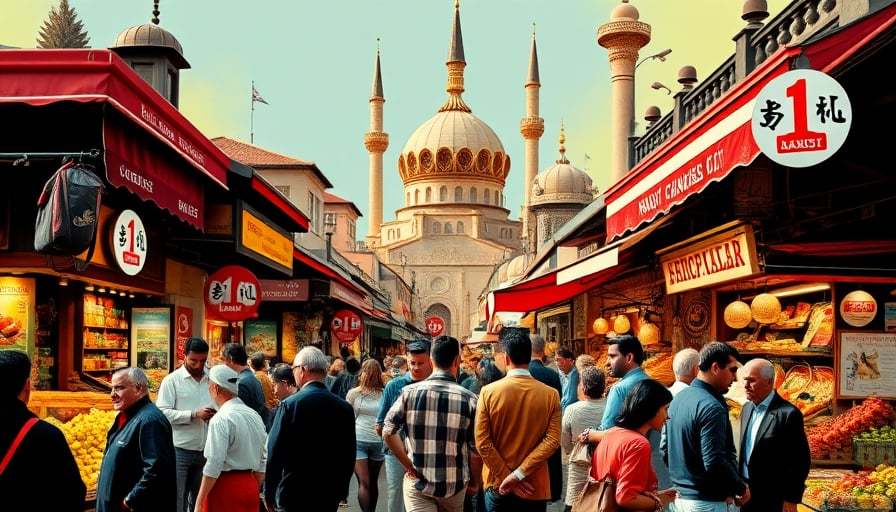LÜKS KADİFE Ticaret ve Sanayii A.Ş.: A Sector‑Specific Overview
LÜKS KADİFE Ticaret ve Sanayii A.Ş. (hereafter “LÜKS KADİFE”) operates within Turkey’s industrial textile sector, specializing in the manufacture of high‑quality corduroy and velvet fabrics. These materials find applications in upholstery, clothing, and curtain production, positioning the company as a key supplier to both domestic fashion houses and furniture manufacturers. Additionally, LÜKS KADİFE exports a substantial portion of its output to European Union markets, thereby integrating its operations into the broader European textile supply chain.
Financial Snapshot (as of 2025‑10‑23)
| Metric | Value |
|---|---|
| Closing price | TRY 116.9 |
| 52‑week high | TRY 146.3 |
| 52‑week low | TRY 73 |
| Market capitalization | TRY 3,273,200,042 |
The company’s share price has displayed notable volatility within the past year, oscillating between roughly TRY 73 and TRY 146.3. This fluctuation reflects the broader sensitivity of the textile industry to raw‑material price swings, seasonal demand cycles, and geopolitical factors affecting export logistics.
Operational Focus
- Product Portfolio: The core production lines encompass corduroy and velvet textiles, engineered to meet rigorous standards for durability and aesthetic appeal. These fabrics are utilized in both interior design (e.g., upholstery and drapery) and apparel manufacturing.
- Customer Base: LÜKS KADİFE serves a dual market: domestic fashion retailers and furniture producers, as well as European Union (EU) clients. The company’s export strategy is tailored to the EU’s stringent quality and sustainability requirements.
- Supply Chain: Raw materials—cotton, polyester blends, and natural fibers—are sourced from both local suppliers and international vendors. The company has invested in modern weaving and finishing equipment to maintain competitive production costs and to support its export commitments.
Market Context
The Turkish textile sector, historically a cornerstone of the national economy, has undergone significant transformation in recent years. Key drivers of change include:
- Currency Volatility: The Turkish lira’s fluctuations directly impact import costs for raw materials and influence the pricing of exported goods.
- EU Trade Policies: Tariff regimes, regulatory compliance, and sustainability mandates in the EU affect the feasibility of Turkish textile exports.
- Domestic Demand Dynamics: Seasonal variations in fashion trends and domestic construction projects create cyclical demand for upholstery and curtain fabrics.
In this environment, LÜKS KADİFE’s ability to maintain consistent production quality and to adapt to shifting regulatory landscapes is essential for sustaining its market position.
Recent Developments and Investor Outlook
Although no company‑specific headlines have emerged in the latest financial news cycle, the broader industrial backdrop offers several insights:
- Competitive Landscape: The text‑based industry faces increasing competition from alternative materials (e.g., synthetic blends) and from manufacturers in lower‑cost regions. LÜKS KADİFE’s emphasis on premium fabrics may insulate it from price‑sensitive competitors, yet it also requires continuous investment in R&D.
- Export Opportunities: The EU’s ongoing commitment to sustainable textile practices presents an avenue for LÜKS KADİFE to differentiate itself through eco‑friendly production methods, potentially opening new niche markets.
- Risk Factors: Exchange‑rate exposure, supply‑chain disruptions (e.g., port congestion, raw‑material shortages), and evolving EU tariffs remain salient risks that could affect profitability.
For investors assessing LÜKS KADİFE, the key considerations will revolve around its capacity to navigate currency swings, its responsiveness to EU regulatory changes, and its strategic investments in technology and sustainability.
Conclusion
LÜKS KADİFE continues to play a vital role in Turkey’s industrial textile ecosystem by delivering high‑quality corduroy and velvet fabrics to both domestic and European markets. While the company’s recent financial performance reflects the inherent volatility of the sector, its established product lines and export experience position it to capitalize on emerging opportunities in sustainable textile production. Investors and industry observers should monitor the company’s strategic initiatives, particularly in technology adoption and compliance with evolving EU standards, to gauge its long‑term resilience and growth potential.
